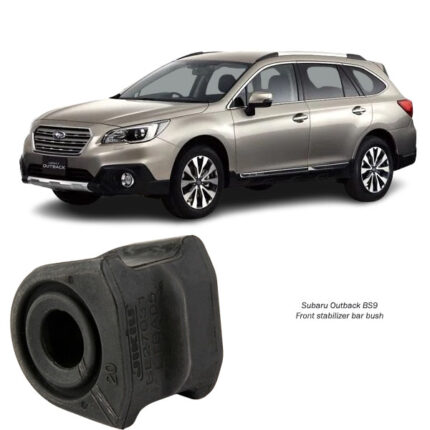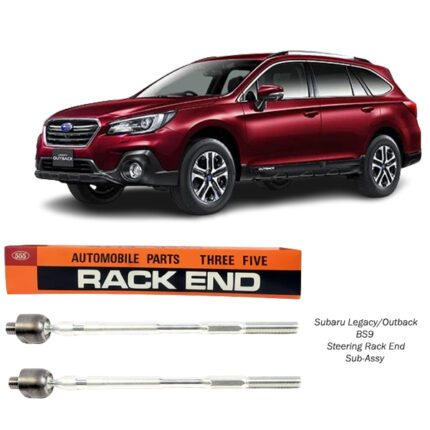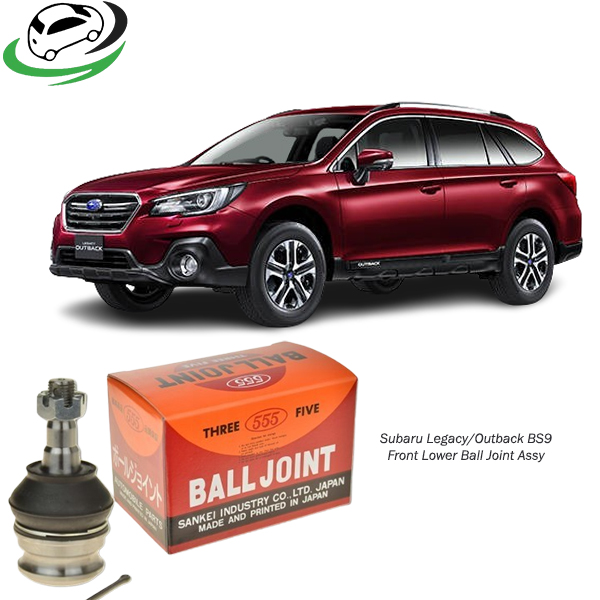-10%
Get Subaru Legacy/Outback BS9 Front Lower Ball Joint Assy 20206AJ000 in Kenya
Ball joints are crucial components of a vehicle’s suspension system, providing a pivot point between the wheels and the suspension. These joints allow the wheels to move vertically with the suspension while steering left or right. Typically made of a ball-and-socket mechanism similar to the human hip joint, ball joints are designed to endure significant stresses and provide a smooth, controlled ride.
Functions of Ball Joints
Ball joints serve several key functions in a vehicle’s suspension system:
- Pivot Point: Ball joints act as pivot points, allowing the wheels to turn left and right and move up and down with the suspension. This dual movement is essential for steering and handling.
- Support: They support the weight of the vehicle and contribute to maintaining proper alignment of the suspension components. Upper and lower ball joints (in vehicles with double-wishbone suspension) work together to ensure stability.
- Smooth Ride: By facilitating controlled movement of the suspension, ball joints help absorb road shocks and vibrations, contributing to a smoother ride.
- Steering Control: Properly functioning ball joints are critical for precise steering. They ensure that the steering knuckles respond accurately to the driver’s input, maintaining vehicle control.
Types of Ball Joints
Ball joints come in various types depending on the vehicle’s suspension design:
- Upper and Lower Ball Joints: Common in double-wishbone suspension systems, where each wheel has an upper and a lower ball joint.
- Load-bearing and Non-load-bearing: In MacPherson strut suspension systems, typically one ball joint carries the vehicle’s weight (load-bearing), while the other does not (non-load-bearing).
- Adjustable and Non-adjustable: Some ball joints allow for adjustment to fine-tune the alignment settings, while others are fixed and do not permit adjustments.
Signs of Worn or Failing Ball Joints
Ball joints can wear out over time due to constant movement, exposure to road conditions, and environmental factors. Recognizing the signs of failing ball joints is crucial for vehicle safety and performance:
- Clunking Noises: One of the most common symptoms is a clunking or knocking noise, especially when driving over bumps or rough terrain. This noise indicates excessive play in the ball joint.
- Vibration: Excessive vibration felt through the steering wheel can signal worn ball joints. This vibration is due to the loose connection between the suspension components and the wheel.
- Uneven Tire Wear: Worn ball joints can cause improper alignment, leading to uneven tire wear. Inspect the tire tread for signs of abnormal wear patterns.
- Poor Handling: If the vehicle feels loose or wanders on the road, it could be due to worn ball joints affecting the suspension alignment and stability.
- Steering Play: Excessive play or looseness in the steering wheel can indicate that the ball joints are no longer holding the suspension components tightly.
Maintenance and Replacement
Maintaining and replacing ball joints is essential for ensuring vehicle safety and optimal performance. Here’s how to go about it:
- Regular Inspection: Regularly inspect the ball joints for signs of wear. Look for torn boots, grease leaks, or excessive play. A visual inspection can often reveal potential issues before they become severe.
- Lubrication: Some ball joints are serviceable and can be lubricated to extend their lifespan. Regularly applying grease helps maintain smooth operation and reduces wear.
- Timely Replacement: If any signs of wear or damage are detected, replace the ball joints promptly. Delaying replacement can lead to further damage to the suspension system and compromise vehicle safety.
Replacement Process
Replacing ball joints involves several steps and may require specialized tools:
- Lift and Secure the Vehicle: Use a jack to lift the vehicle and support it with jack stands. Remove the wheels to access the ball joints.
- Remove Suspension Components: Depending on the vehicle design, you may need to remove the control arms, steering knuckles, or other suspension parts to access the ball joints.
- Remove the Old Ball Joint: Use a ball joint press or appropriate tools to remove the old ball joint from its mounting.
- Install the New Ball Joint: Press the new ball joint into place, ensuring it is properly aligned and securely fastened.
- Reassemble the Suspension: Reinstall all removed suspension components and ensure all bolts and nuts are torqued to the manufacturer’s specifications.
- Alignment Check: After replacing ball joints, it’s crucial to have the vehicle’s alignment checked and adjusted as necessary to ensure proper handling and tire wear.
Follow us on Facebook for more parts.



